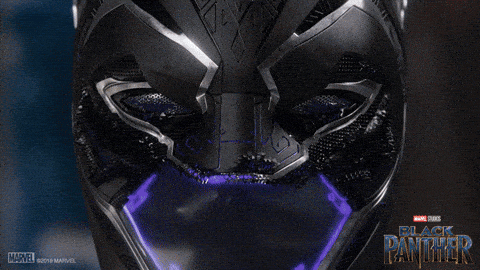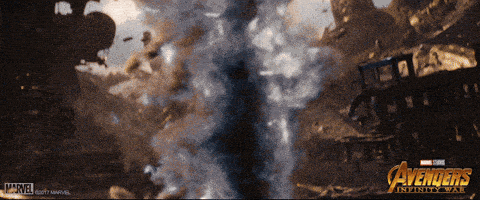- TrendNovate
- Posts
- Marvel’s Odyssey: From Comics to Blockbusters
Marvel’s Odyssey: From Comics to Blockbusters
Unmasking Marvel’s Secrets: A Journey Beyond the Screen
Dear Bizglance Community,
Welcome aboard! We’re thrilled to have you join our exclusive circle of business enthusiasts, strategists, and curious minds. At Bizglance, we’re all about diving deep into the fascinating world of business case studies and dissecting innovative business models.
🌟 Excelsior, Marvel fans! 🌟
In the ever-expanding universe of entertainment, one name reigns supreme: Marvel. From humble comic book origins to global box office dominance, Marvel has woven a tapestry of heroes, villains, and epic sagas that captivate audiences across generations.
Join us as we explore the remarkable journey of Marvel and the Marvel Cinematic Universe (MCU). From strategic vision to economic impact, we’ll delve into the secrets behind their success. Whether you’re a die-hard fan or a curious newcomer, this newsletter promises excitement, creativity, and a dash of superhero magic.
Buckle up, true believers! Let’s dive into the world of Marvel, where every frame holds a universe of wonder. 🚀
Marvel’s Odyssey: From Comics to Blockbusters
Marvel Entertainment, LLC, a wholly-owned subsidiary of The Walt Disney Company, is one of the world’s most prominent character-based entertainment companies. Built on a proven library of more than 8,000 characters featured in a variety of media over seventy-five years, Marvel has evolved from a struggling comic book publisher into a global entertainment powerhouse.
Marvel Entertainment Overview
Marvel’s journey began with iconic characters like Spider-Man, the X-Men, and the Fantastic Four. These beloved heroes and villains have transcended the pages of comic books to become cultural icons. Over the years, Marvel expanded its reach beyond print publications, venturing into licensing, consumer products, and multimedia storytelling.
The Marvel Cinematic Universe (MCU)
The MCU is the crown jewel in Marvel’s success story. Created by Marvel Studios, this media franchise primarily exists within a shared universe, with some instalments also set in adjacent or branching realities. Starting with “Iron Man,” the franchise comprises a series of interconnected films, each independently made by Marvel Studios. Much like Marvel’s original comic universe, the MCU weaves together a tapestry of superhero stories, common plot elements, settings, and characters.
Key Points about the MCU:
Origins: The MCU kicked off with “Iron Man,” introducing Tony Stark (played by Robert Downey Jr.) as the armoured Avenger. This film set the stage for a grand cinematic experiment that would change the landscape of superhero movies forever.
Phases: Organized into phases, the MCU builds toward climactic storylines or events. Phase One included films like “The Avengers,” while Phase Two introduced “Guardians of the Galaxy” and “Avengers: Age of Ultron.” The current phase, Phase Four, explores new dimensions and introduces fresh characters.
Blockbuster Success: The franchise has grossed over $29.8 billion globally, making it the highest-grossing film franchise ever. “Avengers: Endgame” (2019) concluded its theatrical run as the highest-grossing film ever.
Beyond the Big Screen: The MCU extends beyond movies. It encompasses television series, short films (Marvel One-Shots), tie-in comics, and digital content. Shows like “WandaVision,” “Loki,” and “The Falcon and the Winter Soldier” enrich the MCU experience, bridging gaps and exploring character arcs.
Inspiration: The MCU has inspired other studios to create shared universes. It has also spawned themed attractions, documentaries, literary material, and video games.
Marvel’s Core Competencies
Rich Character Library | Creative Talent and Storytelling |
|---|---|
Marvel boasts an extensive roster of iconic characters, each with unique abilities, backstories, and personalities. From the web-slinging Spider-Man to the mighty Thor, these heroes and villains have captured the imaginations of fans worldwide. Here’s how Marvel’s rich character library contributes to its competitive edge: | Marvel’s success lies not only in its characters but also in the art of storytelling. Here’s how their creative teams have shaped compelling narratives: |
Diverse Appeal: Marvel characters span various demographics, appealing to readers and viewers of all ages, backgrounds, and interests. Whether you’re a science enthusiast drawn to Tony Stark’s genius or a mythology buff fascinated by Asgardian lore, there’s a Marvel character for you. | Innovative Origins: From Stan Lee and Jack Kirby’s groundbreaking work in the 1960s to contemporary writers like Brian Michael Bendis and Ta-Nehisi Coates, Marvel’s storytellers have redefined superhero comics. They introduced flawed protagonists, intricate plots, and social commentary. |
Enduring Legacy: Characters like Captain America, Hulk, and Wolverine have stood the test of time. Their longevity ensures that new generations discover and connect with them, creating a loyal fan base. | Character Arcs: Marvel’s commitment to character development allows readers to witness growth, evolution, and redemption. Iconic arcs like “The Dark Phoenix Saga” and “Civil War” resonate because they explore universal themes. |
Complexity and Depth: Marvel characters are multidimensional. They grapple with personal struggles, ethical dilemmas, and inner conflicts. These complexities make them relatable and resonate with audiences. | Event Storylines: Marvel excels at crafting epic events that span multiple titles. Whether it’s the Infinity Gauntlet saga or the Secret Wars crossover, these events captivate fans and shape the Marvel Universe. |
Adaptability: Marvel characters can thrive in various formats—comics, movies, TV shows, and merchandise. Their versatility allows Marvel to explore different storytelling avenues. | Transmedia Mastery: The Marvel Cinematic Universe (MCU) exemplifies transmedia storytelling. Movies, TV shows, podcasts, and comics intersect, creating a cohesive narrative. WandaVision’s genre-bending approach and the scripted podcast demonstrate Marvel’s willingness to innovate. |
Cross-Platform Synergy: Characters often cross over between titles, enhancing the interconnected Marvel Universe. This synergy drives engagement and keeps fans invested. |
Business Model Insights
Product-Based Model
Marvel’s product-based business model revolves around leveraging their vast intellectual property (IP) portfolio across various channels. Here’s how they monetize their creations:
Comic Books: The foundation of Marvel’s success lies in its iconic comic books. These printed publications feature beloved characters, intricate storylines, and captivating artwork. Fans purchase individual issues, trade paperbacks, and digital copies. Marvel’s IP ownership allows them to generate revenue from licensing deals with publishers, merchandise manufacturers, and digital platforms.
Digital Platforms: In the digital age, Marvel has expanded its reach through digital platforms. They offer subscription services like Marvel Unlimited, granting fans access to a vast library of comics. Additionally, Marvel collaborates with platforms like ComiXology and Kindle to distribute digital comics globally.
Merchandise: From action figures and apparel to collectables and home decor, Marvel merchandise is ubiquitous. Licensing agreements with toy companies, clothing brands, and retailers allow Marvel to capitalize on its characters’ popularity. Whether it’s Spider-Man lunchboxes or Iron Man T-shirts, fans eagerly purchase these products.
Film and TV Adaptations: Marvel’s IP extends beyond comics. Their cinematic universe (MCU) has become a box office phenomenon. Each film is a revenue generator, from ticket sales to home video releases. Merchandising tie-ins (toys, clothing, posters) further boost profits. Similarly, TV shows (like “WandaVision” and “Loki”) on streaming platforms contribute to Marvel’s revenue stream.
Video Games: Collaborations with game developers (such as Square Enix) have led to successful Marvel-themed video games. Titles like “Marvel’s Spider-Man” and “Marvel’s Avengers” allow fans to immerse themselves in superhero adventures while generating substantial revenue.
Licensing and Royalties: Marvel licenses its characters to other media companies, theme parks, and even slot machines. These licensing deals provide ongoing royalties, ensuring a steady income stream.
Strategic Partnerships
Marvel’s growth has been fueled by strategic collaborations. Here are notable examples:
BuzzStream: | Salesforce: |
|---|---|
Marvel partners with BuzzStream, a content marketing platform. They use BuzzStream’s tools to manage influencer outreach, track brand mentions and optimize their online presence. This partnership enhances Marvel’s digital marketing efforts and audience engagement. | Marvel leverages Salesforce’s customer relationship management (CRM) platform. By analyzing fan data, managing subscriptions, and personalizing interactions, Marvel ensures a seamless experience for its audience. Salesforce’s robust analytics and automation empower Marvel’s marketing and sales teams. |
The MCU: A Startup Triumph
Strategic Vision
Marvel’s journey from bankruptcy to box office dominance is a remarkable tale of strategic vision. Here’s how they meticulously built the interconnected MCU:
Origins: In 2008, Marvel Studios took a bold step by launching the MCU with “Iron Man.” This film introduced Tony Stark (played by Robert Downey Jr.) as the armoured Avenger. Little did they know that this would kickstart a cinematic revolution.
Interconnectivity: Marvel’s strategic genius lay in weaving a cohesive universe. Each film contributed to a larger narrative, creating anticipation and excitement. Post-credits scenes teased future adventures, keeping fans engaged.
Risk-Taking: Marvel bets on lesser-known characters like Thor, Guardians of the Galaxy, and Ant-Man. Their willingness to take risks paid off, expanding the MCU’s scope beyond traditional superheroes.
Creative Freedom: Marvel empowered directors like Jon Favreau, Joss Whedon, and James Gunn to infuse their unique styles. This creative freedom allowed for diverse storytelling within a shared universe.
Long-Term Planning: Kevin Feige, the mastermind behind the MCU, meticulously planned phases, arcs, and character development. The roadmap extended years ahead, ensuring continuity and surprises.
Market Dominance
Marvel’s impact on the entertainment industry is undeniable:
Box Office Triumph: MCU films consistently dominate the global box office. Hits like “Avengers: Endgame,” “Black Panther,” and “Spider-Man: No Way Home” shattered records, solidifying Marvel’s position. | Cultural Phenomenon: The MCU transcends demographics. It’s not just about superheroes; it’s about shared experiences. Fans eagerly discuss theories, attend midnight premieres, and cosplay as their favourite characters. |
Disney’s Powerhouse: Disney’s acquisition of Marvel in 2009 amplified its market dominance. The MCU synergizes with theme parks, merchandise, and streaming services, creating an ecosystem of Marvel magic. | Innovation: Marvel’s blend of continuity and innovation sets it apart. They balance familiar characters with fresh narratives, keeping audiences hooked. The sliding timeline theory allows flexibility while maintaining coherence. |

Gif by marvelstudios on Giphy
Four Principles of Marvel’s Success
1. Balancing Experience and Freshness
Marvel skillfully combines seasoned talent with new voices to maintain a dynamic creative ecosystem. Here’s how they achieve this balance:
Experienced Inexperience: Marvel selects directors, writers, and producers who bring fresh perspectives while benefiting from the guidance of industry veterans. This blend ensures innovation without compromising quality.
Diverse Voices: By embracing diverse creators, Marvel infuses its storytelling with unique viewpoints. Directors like Taika Waititi (“Thor: Ragnarok”) and Ryan Coogler (“Black Panther”) have left their indelible mark on the MCU.
2. Stable Core with Room for Growth
Marvel’s continuity is anchored by a stable core, yet it allows room for creative exploration. Here’s how they strike this delicate balance:
Continuity: The MCU maintains a consistent thread across films, connecting characters, events, and themes. Fans appreciate callbacks and references that reward their investment.
Creative Freedom: Within this stable framework, Marvel encourages filmmakers to explore new genres, tones, and character arcs. This flexibility keeps the universe fresh and exciting.
3. Challenging the Formula
Marvel refuses to rest on its laurels. Instead, they continually challenge the superhero movie formula:
Genre Mashups: Films like “Guardians of the Galaxy” blend sci-fi with humour, while “Ant-Man” infuses heist elements. Marvel surprises audiences by defying genre conventions.
Plot Twists: Unexpected character developments and plot twists keep fans engaged. “Avengers: Infinity War” shocked viewers with its daring ending.
4. Fostering Curiosity
Marvel knows how to keep fans invested and curious:
Post-Credits Scenes: These tantalizing glimpses into the future create buzz and speculation. Fans stay through the credits, eager for hints about upcoming films.
Transmedia Storytelling: Beyond movies, Marvel extends its narrative to TV shows, comics, and merchandise. Each piece adds layers to the universe, inviting exploration.
Economic Impact and Box Office Records
Unprecedented Success
The Marvel Cinematic Universe (MCU) has achieved unparalleled success at the global box office. Disney’s MCU stands as the first film franchise in history to cross $30 billion in global box office revenue. This remarkable milestone was announced during the studio’s Hall H presentation at San Diego Comic-Con, led by studio chief Kevin Feige. The MCU’s journey began with “Iron Man” in 2008, and since then, it has delivered an unprecedented string of blockbusters, including “Avengers: Endgame” ($2.799 billion) and “Infinity War” ($2.05 billion), both ranking among the highest-grossing movies ever.
Even recent films like “Eternals,” “Ant-Man and the Wasp: Quantumania,” and “The Marvels,” while considered misses by MCU standards, would be victories for any other studio. However, their high production costs meant they lost money for Disney during their theatrical runs. Nevertheless, the MCU’s dominance remains unchallenged.

Gif by marvelstudios on Giphy
Macroeconomic Factors
Marvel’s success isn’t solely due to its superhero prowess; macroeconomic factors played a role:
Post-Crash Resilience: | Escapism and Demand: |
|---|---|
Marvel’s ascent coincided with the 2008 financial crash. Merrill Lynch’s risky decision to finance two C-list superhero movies, “Iron Man” and “The Hulk,” paved the way for the highest-grossing movie franchise ever. Going to the movies, although a luxury, offers relatively inexpensive escapism. During economic downturns, families turn to films as a form of entertainment, contributing to increased box office revenue. | Even during healthy economies, people seek escapism. Movies provide a relatively affordable way to escape daily pressures. The desire for an “escape” remains strong, even when purchasing power is affected by inflation or wage stagnation. |
Marvel’s journey from a struggling comic book publisher to a global entertainment powerhouse is nothing short of extraordinary. Here’s a recap of their key achievements:
Creativity: Marvel’s ability to blend creativity with familiarity has captivated audiences worldwide. From introducing lesser-known characters to genre-bending experiments, they keep storytelling fresh.
Continuity: Despite an expansive universe, the MCU maintains a high degree of consistency. Their interconnected stories across various media channels set a new standard for transmedia storytelling.
Audience Engagement: Marvel listens to its fans, adapts storylines based on feedback, and keeps them invested. Whether through movies, TV shows, or merchandise, they foster curiosity and excitement.
The way to get started is to quit talking and begin doing

Gif by HollerStudios on Giphy





